The science behind the art of Jeff Koons
Today, H&M will release a special-edition leather handbag featuring the likeness of Jeff Koons’s Balloon Dog (Yellow) in some stores and on its website. To celebrate (and, really, further publicize) the occasion, Koons will decorate the six-story facade of the Swedish retailer’s Fifth Avenue flagship store in New York City with images of his iconic sculpture.
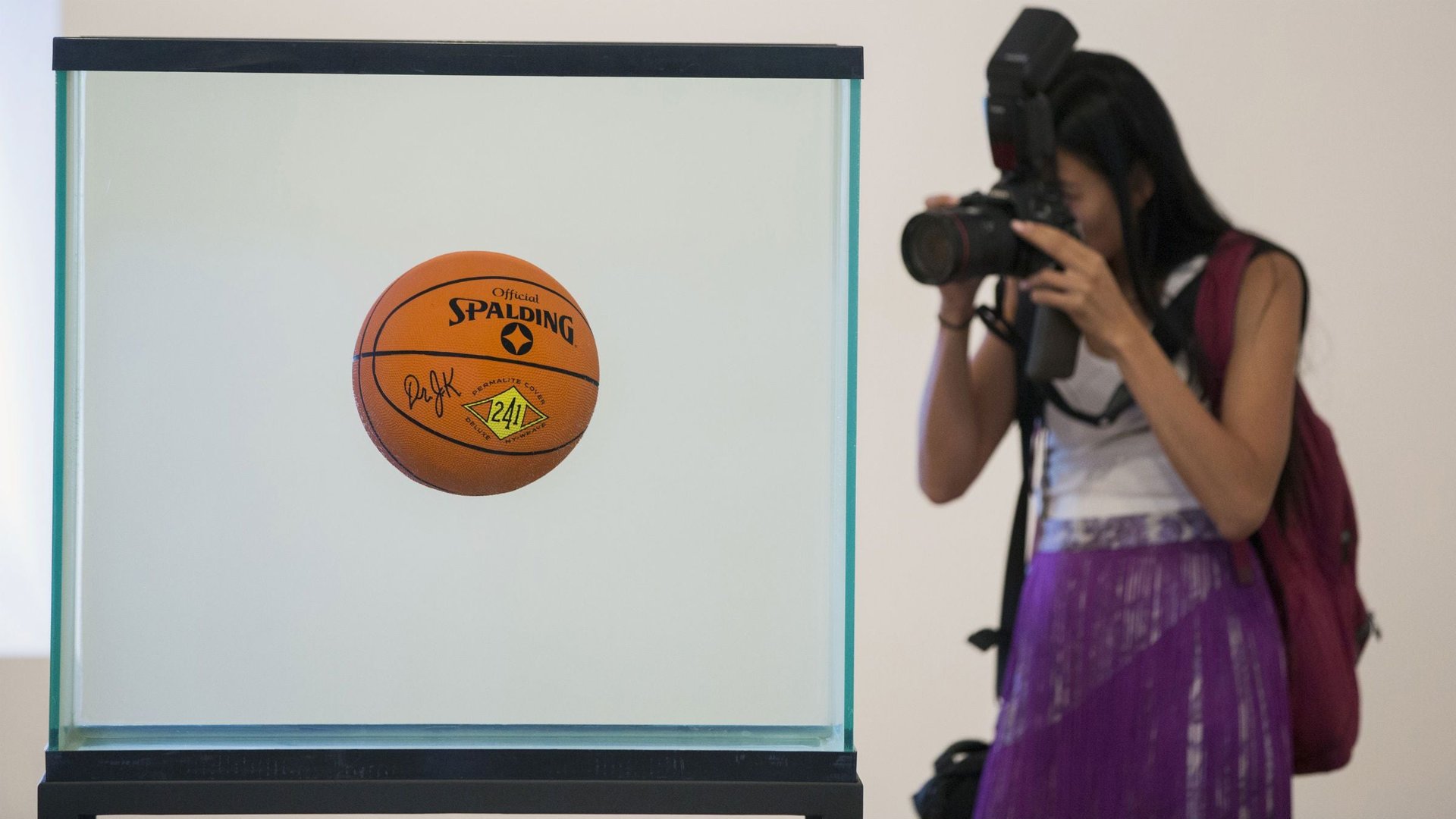

Today, H&M will release a special-edition leather handbag featuring the likeness of Jeff Koons’s Balloon Dog (Yellow) in some stores and on its website. To celebrate (and, really, further publicize) the occasion, Koons will decorate the six-story facade of the Swedish retailer’s Fifth Avenue flagship store in New York City with images of his iconic sculpture.
The most expensive living artist as of a November 2013 auction, Koons is routinely noted for his shrewd, and sometimes unusual, business practices. But the former Wall Street commodities broker also has a knack for science and technology.
In fact, his works are often so cutting edge that some of the world’s leading museums have found themselves ill-equipped to handle them. (Asked why the Guggenheim never went through with its 1996 plan for a major Koons exhibition, former director Lisa Dennison admitted to the New York Times that “finding the technology to match Jeff’s vision became impossible.”)
The inherent challenge of presenting his work is one reason that Koons, now 59, hadn’t had a comprehensive stateside show until three weeks ago. Spanning his entire career from 1978 to the present, “Jeff Koons: A Retrospective” is the largest and most expensive show the Whitney Museum of American Art has ever devoted to a single artist. It is also the last the Whitney will present before moving to a buzzy new location in 2015. The show travels to the Centre Pompidou in Paris this November and to the Guggenheim Bilbao next June.
Out of the nearly 150 works on view, here are five of the most technologically complex and the science behind them:
One Ball Total Equilibrium Tank (Spalding Dr. J 241 Series)
, 1985
Glass, steel, sodium chloride reagent, distilled water, basketball

This piece relies on the laws of chemistry and physics. Koons carefully adjusted the composition of the water to keep the basketball suspended in the center of the tank, rather than letting it float to the surface as it would normally do. “I wanted just to have water, something very, very pure,” Koons explains in an audio guide for the exhibition. “But to achieve equilibrium within the confines of an aquarium really became impossible.” Under the guidance of Nobel Prize-winning physicist Richard P. Feynman, Koons added a highly pure reagent grade sodium to the tank. Once he layered the water (the heavier saltwater sat at the bottom of the tank, while the lighter freshwater rested on top), the basketball would stay where he wanted. But the technical challenge of this piece didn’t end with its initial fabrication. Because the water eventually becomes homogenous, causing the basketball to float, the tank needs to be refilled each time the piece is installed. Environmental factors such as climate control and light—each of which alter the water’s temperature—and even the vibration of viewers’ feet as they move past the piece can affect the ball’s equilibrium. Even after the tank has been refilled, its solution must be continually readjusted.
Cat on a Clothesline
, 1994-2001
Polyethylene and plastic
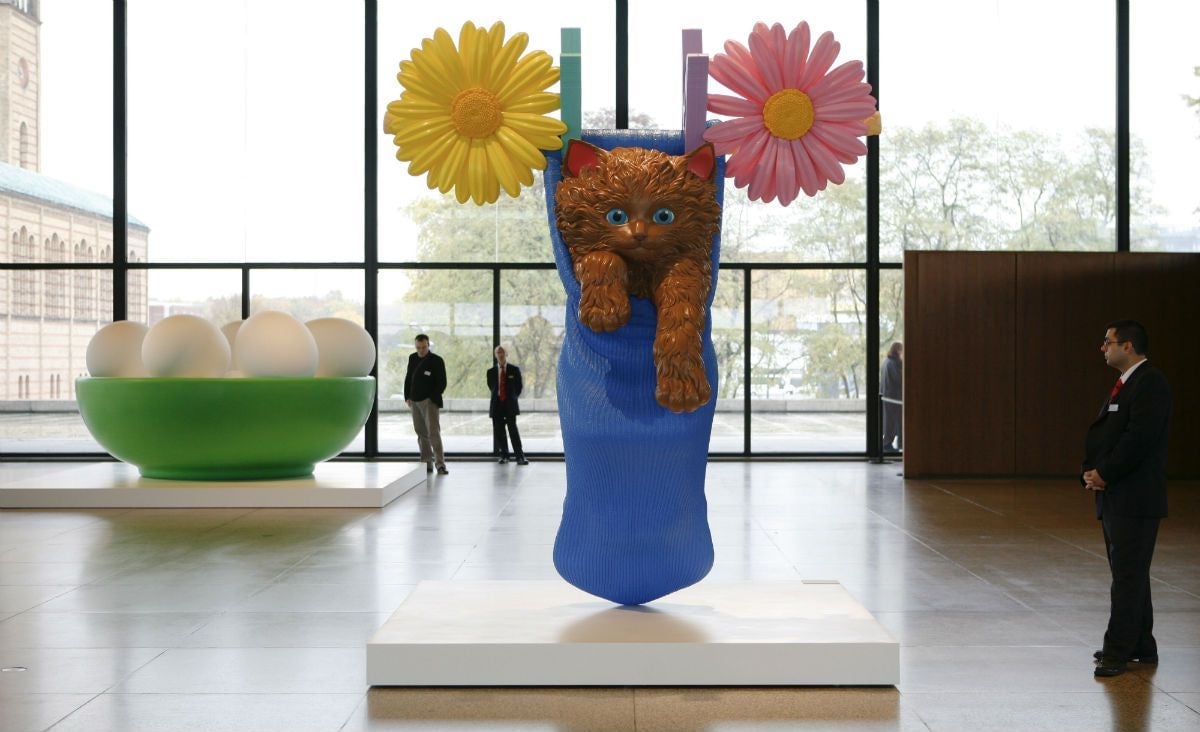
This playful piece is made entirely of polyethylene, a material frequently used in children’s toys. According to curator Scott Rothkopf, Koons likes the stuff largely because it compromises the “play kitchens and houses in which children often have their first adult fantasies.” But using the material wasn’t all fun and games. “To make such a large object out of polyethylene with the kind of detail Jeff requires—the detail in the sock, the fur of the cat, the flowers—was a challenge because this precise kind of plastic doesn’t usually have an application at that scale,” Rothkopf says.
Balloon Venus (Orange)
, 2008–2012
Mirror-polished stainless steel with transparent color coating
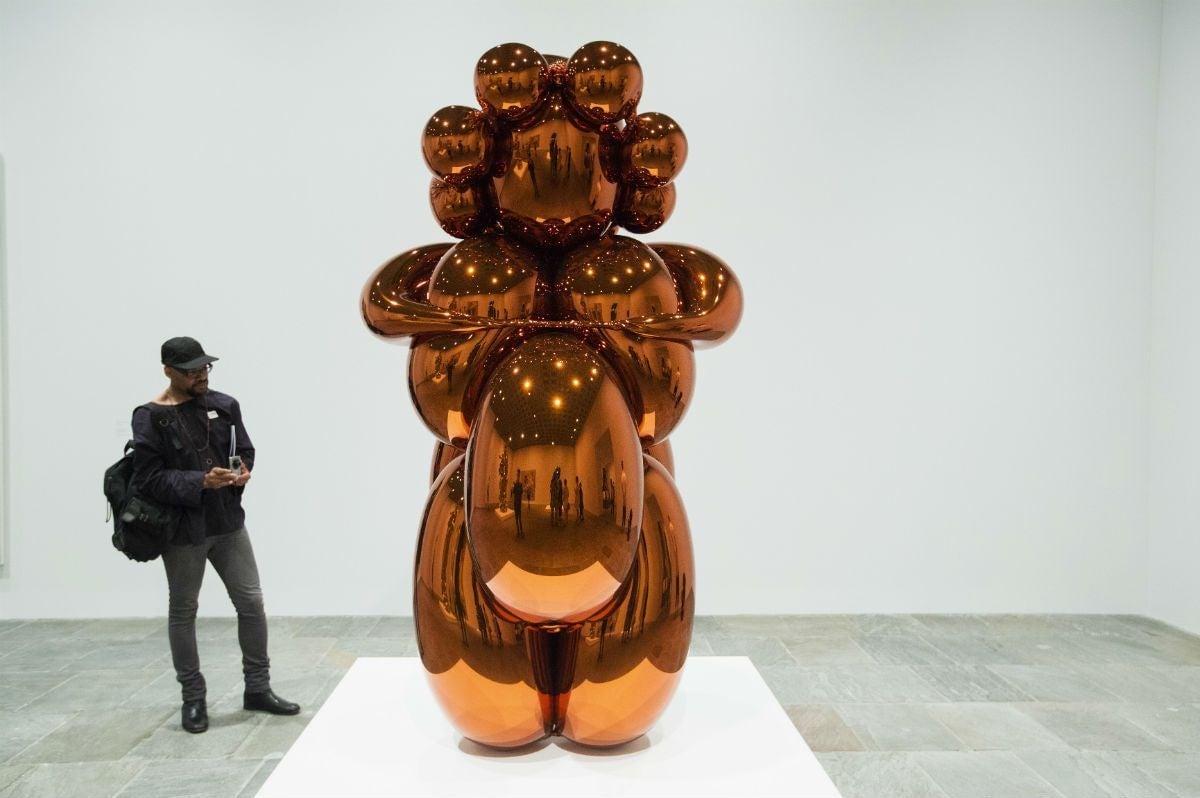
A reference to the Paleolithic Venus of Willendorf statue, this sculpture owes its especially reflective surface to a custom stainless steel alloy Koons developed in collaboration with German fabrication firm Arnold. The structure itself is perhaps even more technologically impressive. Koons began the piece by working with a balloon designer to create an original model of the stone Venus from a single balloon. “Any normal person would have made the hair out of one balloon and the body out of another,” says Rothkopf, alluding to the artist’s near-religious commitment to realism. “But by using a single balloon Jeff could get the sense of continuous pressure and air throughout.” To generate the computer rendering necessary for fabricating the larger, final version, Koons relied on 3D imaging. But the light scanning method he used in his 1994-2000 Balloon Dog (Yellow) was insufficient for capturing the balloon’s minute folds in the level of detail he was after. Instead he turned to CT scanning, a technology powerful enough to detect a brain tumor and not often used outside the medical field. The end result is a sculpture cast in such a way that the interior volumes echo the twists and curves of the balloon with hyper-realistic precision.
Play-Doh,
1994–2014
Polychromed aluminum
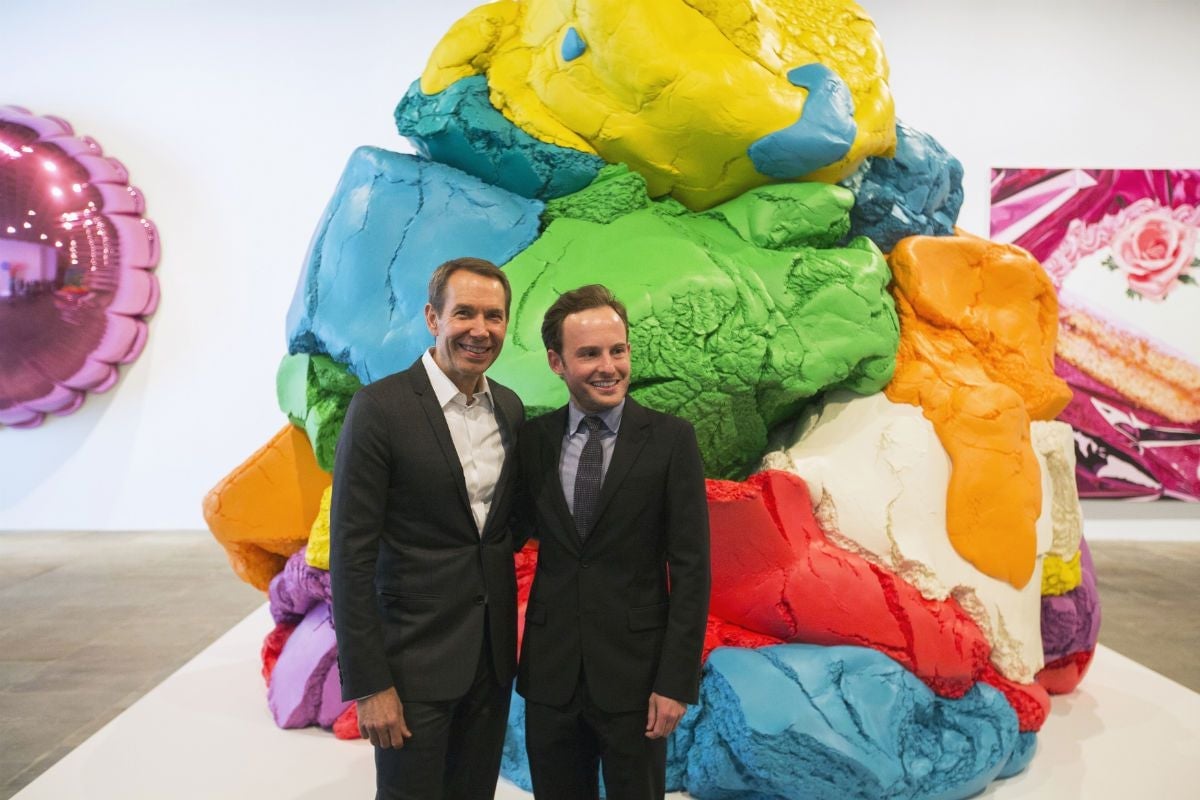
When Koons began work on this 10-foot behemoth comprised of 27 individual pieces, he intended for it to be made entirely out of polyethylene, the same material used in Cat on a Clothesline. The plastic substance did not, however, afford him the particularities—the crustiness, the cracks and tears in the surface—he demanded, so, after several years of work, he started afresh, casting the piece in aluminum. He used lost wax casting for the external pieces, sand casting for the internal. While the use of lost wax casting itself wasn’t cutting edge, Koons made advancements by achieving both a scale and an intricacy rarely produced by the centuries-old method. What makes the sculpture even more impressive from a structural perspective is the fact that each colored section is a separate piece of metal made from an individual cast and spray-painted in colors customized to reflect the Play-Doh palette of 1994, the year the sculpture was begun. (Special additives lent the paint Play-Doh’s matte finish.) The piece took 20 years to complete but the technical challenge didn’t end with the fabrication process. “The piece is a challenge technically to install because there are no registration marks and no system of pins and holes to indicate how the pieces sit on top of each other,” Rothkopf says. Instead, Koons turned again to physics, relying on gravity in his meticulous assembly process. The pieces are hung off a gantry and lowered carefully on top of one another, held together simply by their own weight.
Liberty Bell
, 2006–2014
Bronze, wood, wrought iron, cast iron
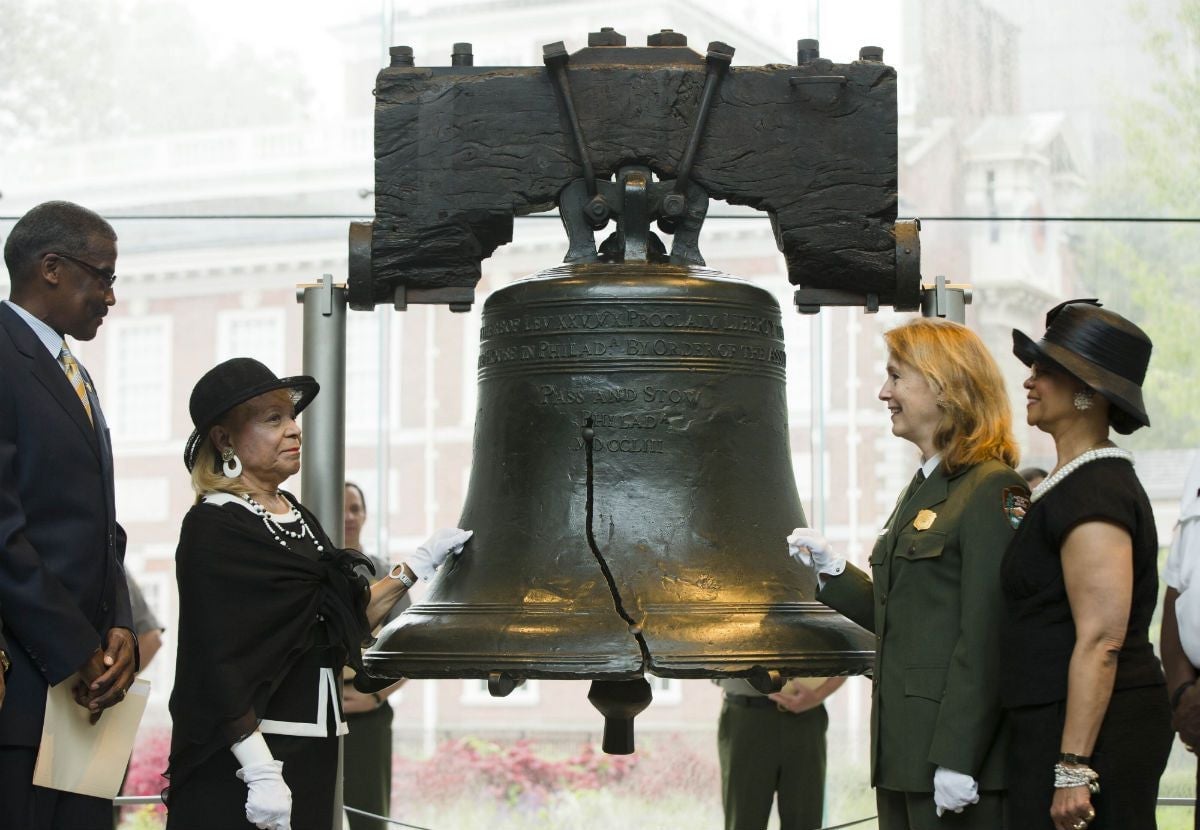
To create this near-perfect replica of a famously flawed national treasure, Koons conducted a structured light scan. Less precise than the CT scans he was already using (the more advanced technology could have endangered the aging artifact), the use of 3D scanning itself was still, by general art world standards, innovative. “3D scanning goes beyond 99% of what most artists would want to or be able to achieve in capturing the interior and exterior volumes, every nook, every crevice, every cranny of this very large and geometrically irregular, very old object,” Artforum editor Michelle Kuo argues in the audio guide. Once a computer rendering was generated, Koons opted to mill the bell rather than casting it. The same technique used to create the original, milling allowed Koons to mimic the imperfections on the bell’s surface with greater exactitude. To help recreate the bell’s 257 parts, Koons consulted Andrew Lins, a metallurgist at the Philadelphia Museum of Art. When it came to painting, Koons relied on Photoshop to separate the bell’s surfaces by their R.G.B. (red, green, blue) values, creating a grid in which each color was broken down into approximately 150 to 200 shades. Painting the bell’s stand called for 325 different colors and the use of roughly 25,000 laser-cut stencils.
Liberty Bell is an excellent example of how Koons designs are one step ahead of the technological status quo. When he first began working on the monumental piece in 2006, it was not yet possible to machine-mill bronze from a 3D rendering with the precision Koons has finally achieved. “In many cases Jeff has had to wait for technology to catch up with his vision,” the Whitney’s chief curator Donna De Salvo recently told The Daily Beast.
In pushing the technological envelope, Koons has fostered advances not only in the world of art, but in the realm of technology itself. Kuo wrote in her catalog essay for the exhibition: “…his fabrication standards now easily — and incredibly — exceed those of advanced industry, whether aerospace or military.”